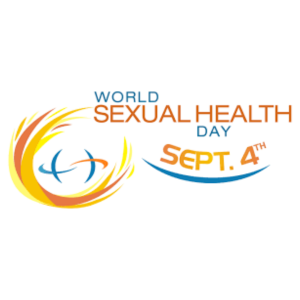Dysphagia is defined as difficulty in swallowing and may occur due to problems in the mouth, throat, or esophagus. It is not a disease on its own but rather a symptom of an underlying medical condition such as neurological disorders, structural blockages, or malignancies. People with dysphagia often report coughing or choking when eating, a sensation of food sticking, or an inability to swallow properly. If left untreated, dysphagia can lead to malnutrition, dehydration, or serious complications like aspiration pneumonia. Kweshan helps you understand this condition, its symptoms and treatment.
The Case For Uganda.
In Uganda, studies show that dysphagia is a fairly common clinical presentation, especially among patients with gastrointestinal and esophageal conditions. Research conducted in South-Western Uganda among patients undergoing endoscopy found that about 13.6% presented with dysphagia as their primary symptom. In rural Eastern Uganda, another clinical survey reported that 39% of patients had dysphagia, and among them, more than half were later diagnosed with esophageal cancer. At the Uganda Cancer Institute, an analysis of nearly 2,000 esophageal cancer cases revealed that 80.3% of the patients reported progressive dysphagia as their main complaint.
These statistics highlight the significant burden of dysphagia in Uganda and its strong association with esophageal cancer. While it can appear as a symptom of various conditions, in the Ugandan context, dysphagia is often an indicator of serious underlying disease, making early detection and medical intervention critical.
Types of Dysphagia
Dysphagia can be broadly categorized into two main types—oropharyngeal dysphagia and esophageal dysphagia—depending on where the swallowing difficulty occurs. Each type has distinct causes, symptoms, and implications. Understanding these differences is important for proper diagnosis and treatment.
1. Oropharyngeal Dysphagia
Oropharyngeal dysphagia happens when there are difficulties in the mouth or throat (the oropharynx), preventing food or liquids from moving safely into the esophagus. This type is often linked to neurological or muscular disorders. Common causes include stroke, Parkinson’s disease, multiple sclerosis, brain injury, cerebral palsy, or muscle weakness due to aging.
Key signs and symptoms include:
-
Coughing or choking immediately after swallowing.
-
Difficulty initiating a swallow.
-
Nasal regurgitation (food or liquid coming back through the nose).
-
A gurgling voice after drinking.
Because the problem lies at the beginning of the swallowing process, people with oropharyngeal dysphagia are at high risk of aspiration, where food or liquids accidentally enter the airway, leading to respiratory infections or pneumonia.
2. Esophageal Dysphagia
Esophageal dysphagia occurs when food gets stuck or moves abnormally through the esophagus (the muscular tube connecting the throat to the stomach). This type is usually caused by structural blockages, narrowing, or motility disorders that affect how the esophagus pushes food downward.
Common causes include:
-
Esophageal strictures: Narrowing of the esophagus due to scarring from acid reflux (GERD) or injury.
-
Esophageal tumors: Cancerous or benign growths that obstruct passage.
-
Achalasia: A motility disorder where the lower esophageal sphincter fails to relax properly, trapping food.
-
Esophagitis: Inflammation of the esophagus, often from acid reflux, infections, or allergies.
Typical symptoms include:
-
A sensation of food “sticking” in the chest or throat.
-
Regurgitation of food or liquids.
-
Chest discomfort or pain during swallowing.
-
Progressive worsening of symptoms, especially with solid foods before liquids.
Early Signs of Dysphagia
Early signs of dysphagia can be subtle at first but become more noticeable as swallowing difficulties progress. Recognizing these warning signs early is important because they may point to underlying neurological, muscular, or structural problems that require medical attention.
1. Coughing or Choking While Eating or Drinking
One of the most common early signs is frequent coughing or choking when swallowing food or liquids. This happens when food or drink enters the airway instead of moving smoothly into the esophagus.
2. Difficulty Initiating a Swallow
People may struggle to start the swallowing process, especially with solid foods. This can cause hesitation or repeated attempts before food goes down.
3. Sensation of Food Sticking in the Throat or Chest
A feeling that food is “stuck” after swallowing, even when eating small bites, is an early indicator of esophageal dysphagia.
4. Frequent Throat Clearing or Gurgling Voice
After swallowing, food or liquid may remain in the throat, causing a “wet” or gurgly-sounding voice. This is a sign that the airway may not be fully protected during swallowing.
5. Unexplained Weight Loss and Poor Appetite
When swallowing becomes uncomfortable, people may begin eating less. Over time, this can lead to unintended weight loss or malnutrition.
6. Drooling or Spillage of Food from the Mouth
Difficulty controlling food or saliva in the mouth, often seen in children or those with neurological conditions, can indicate oropharyngeal dysphagia.
7. Recurrent Chest Infections or Pneumonia
Aspiration of food or liquid into the lungs can cause repeated chest infections, often an overlooked early sign of swallowing problems.
Medical Treatments & Procedures for Dysphagia
The treatment of dysphagia depends on its type, severity, and underlying cause. Medical treatments and procedures are usually aimed at improving swallowing safety, clearing obstructions, and preventing complications like aspiration or malnutrition. Here are the main approaches:
1. Swallowing Therapy (Rehabilitation)
Speech and language therapists often lead swallowing therapy. They teach patients exercises to strengthen throat and tongue muscles, improve coordination, and use safer swallowing techniques. For example, changing head posture (like the chin-tuck maneuver) can help direct food safely into the esophagus.
2. Dietary and Nutritional Management
In many cases, dietary adjustments are part of treatment. Foods may be modified in texture (soft, pureed, or thickened liquids) to reduce the risk of choking. Nutritionists also ensure patients maintain adequate calorie and fluid intake despite difficulties.
3. Medications
Certain drugs can help manage conditions that cause dysphagia:
-
Proton pump inhibitors (PPIs) for acid reflux or GERD that irritates the esophagus.
-
Muscle relaxants or botulinum toxin injections for esophageal motility disorders like achalasia.
-
Anti-inflammatory or steroid medicines for swelling due to esophagitis or allergic reactions.
4. Endoscopic Procedures
Doctors may use minimally invasive procedures to treat structural problems in the esophagus:
-
Esophageal dilation: A balloon or dilator is inserted to widen narrowed areas caused by strictures or scarring.
-
Stent placement: A tube-like device keeps the esophagus open in cases of blockage, especially for advanced esophageal cancer.
5. Surgery
When structural abnormalities or severe conditions are the cause, surgery may be required. Examples include:
-
Myotomy surgery for achalasia, where the lower esophageal sphincter muscle is cut to allow food to pass.
-
Tumor removal or cancer surgery if dysphagia is caused by esophageal cancer.
-
Repair of anatomical abnormalities, such as diverticula (pouches in the esophagus).
6. Feeding Tubes (Nutritional Support)
In severe cases where swallowing is unsafe or impossible, temporary or permanent feeding tubes may be recommended:
-
Nasogastric tube (NG tube): Inserted through the nose into the stomach for short-term feeding.
-
Percutaneous endoscopic gastrostomy (PEG tube): Surgically placed directly into the stomach for long-term feeding.
7. Management of Underlying Conditions
Because dysphagia is often a symptom rather than a disease, managing the root cause—whether neurological (e.g., stroke), muscular, or gastrointestinal—is central to treatment. Rehabilitation after stroke, control of Parkinson’s disease symptoms, or cancer treatment may all reduce swallowing difficulties.
In short, medical treatment for dysphagia can include rehabilitation therapies, diet modification, medications, endoscopic interventions, surgery, or feeding tubes, depending on the patient’s condition. Early diagnosis and tailored treatment improve quality of life and reduce risks of serious complications.












